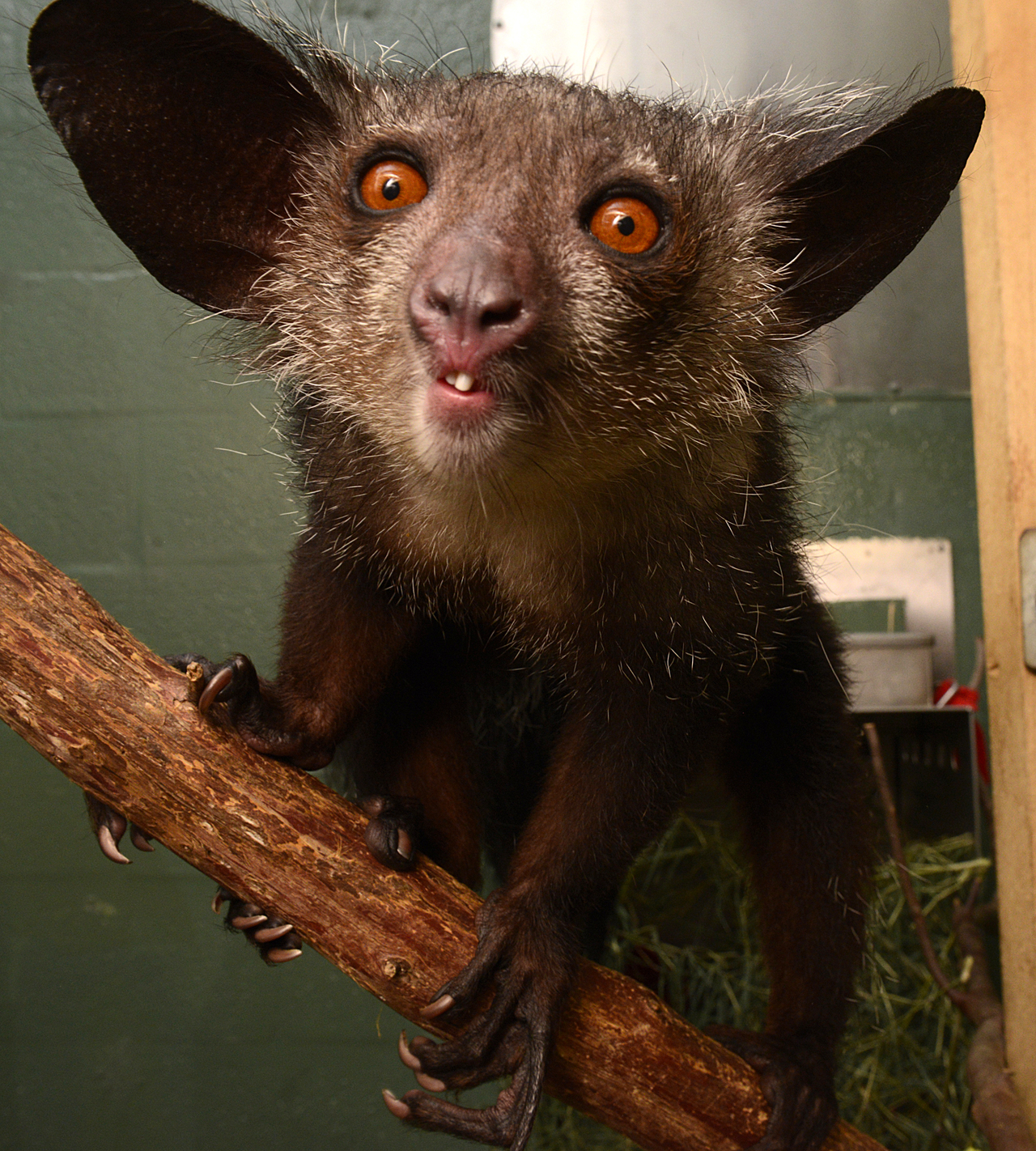
1020 Fady and the Ayeaye Duke Lemur Center
1. Aye-Ayes Have a Very Odd Appearance Like all lemurs, aye-ayes are primates, in the same order as monkeys, apes and humans. But aye-ayes resemble something between a raccoon and a rat.

Add ‘Pseudo Thumb’ to the AyeAye Lemur’s Bizarre Anatomy The New York Times
The aye-aye is the largest nocturnal lemur, best known for its distinct appearance and unusual diet. The aye-aye has large radar-like ears and specialized middle fingers designed specifically for detecting and pulling out grubs from under tree bark. Its robust and ever-growing incisor teeth allow this uniquely adapted lemur to crack open hard.
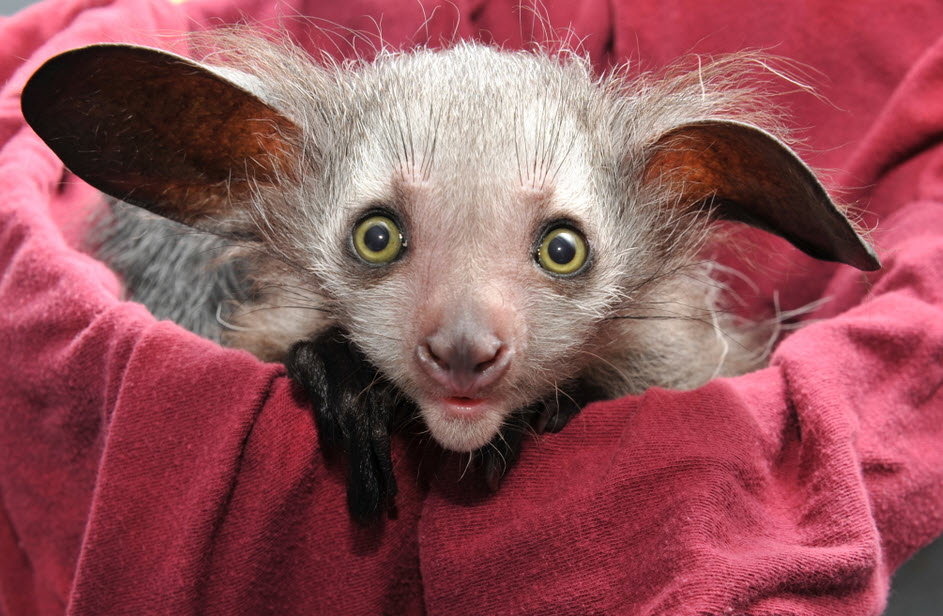
AyeAye The Biggest Animals Kingdom
Learn all about the mysterious aye-ayes at Jersey Zoo and how their appearance and behaviours make them truly unique!
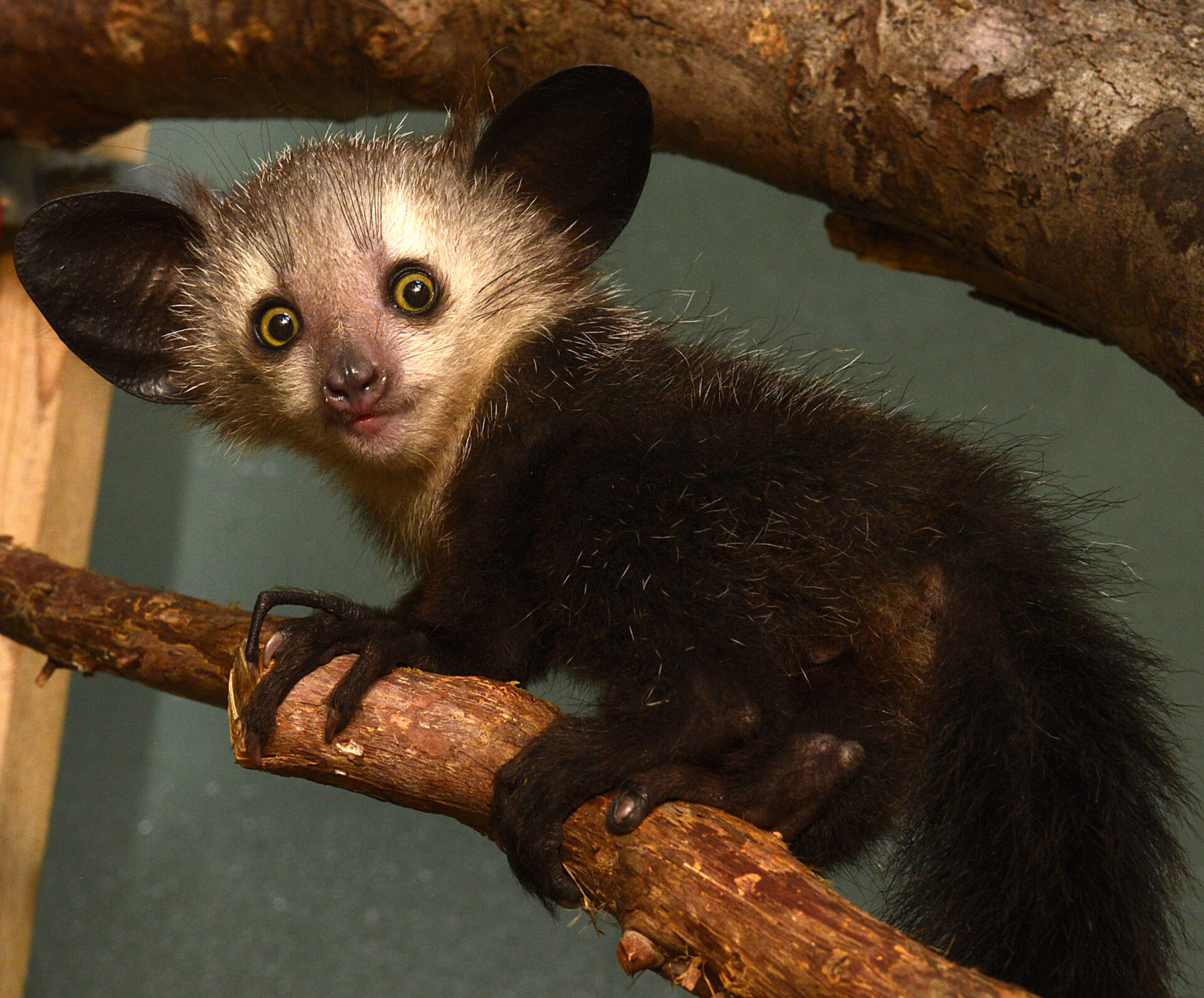
Ayeaye Duke Lemur Center
This curious creature is known as an aye-aye. FREAKY FINGERS Aye-ayes can be found only in the forests of Madagascar, an island nation off the coast of Africa. The animals rarely descend from their treetop digs to the forest floor. Only active at night, they spend the day snoozing on branches in nests made of leaves.
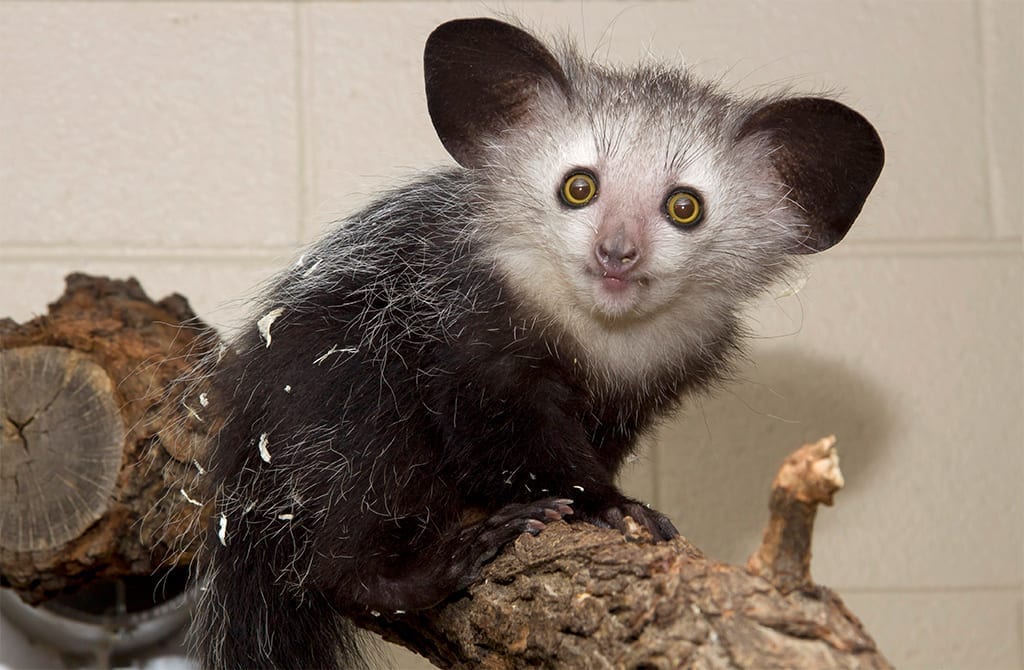
Aye Aye Facts Learn about Aye Aye Finger, Habitat and Diet Primates Park
SDZWA Library Links. These pages are part of the San Diego Zoo Global Library website. Our website provides access to zoo, animal, plant, conservation, and veterinary information resources. Although the site is open to the general public, librarian services and some resources are reserved for SDZ Global staff and volunteers.

Tiny Bee's Bentos Aye Aye Captain?
The aye-aye is a rare, nocturnal Madagascar primate with a bushy tail that resembles a cross between a squirrel and a possum and grows to about 16 inches long. For its bizarre appearance, it has.
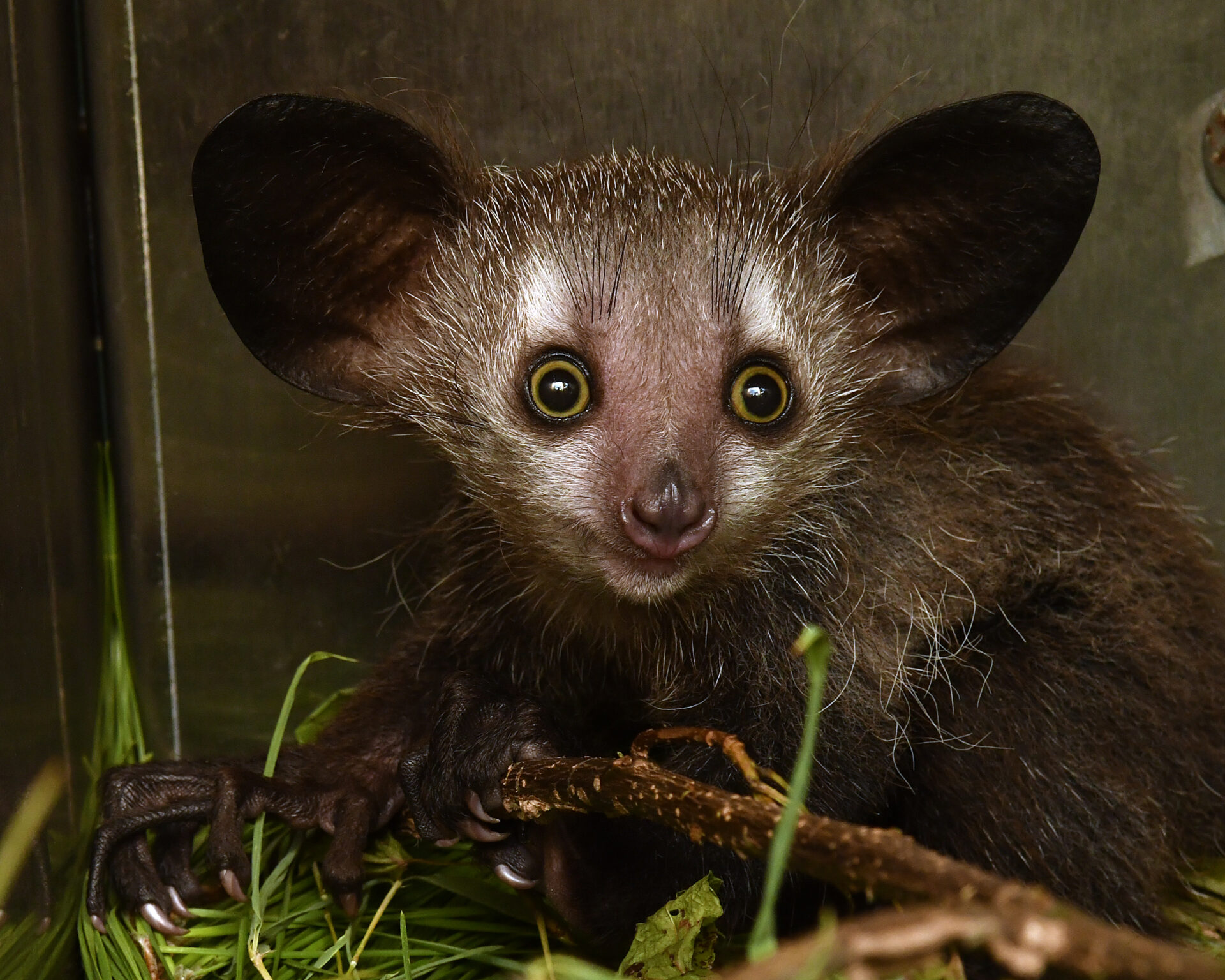
AyeAye Duke Lemur Center
Aye-aye facts. Aye-ayes find larvae to eat by tapping on branches and listening for hollow sounds, then they use their strong front teeth to rip open the bark before reaching into the hole to pull out their prey. In their Madagascan home, aye-ayes are believed to be omens of bad luck and even death to those who look at them.

The animal which brings death MadaMagazine
The aye-aye (Daubentonia madagascariensis) is about 40 cm (16 inches) long, excluding the bushy 55- to 60-cm (21.6- to 23.6-inch) tail. (more) aye-aye, ( Daubentonia madagascariensis ), rare squirrel -like primate of Madagascar, the sole living representative of the family Daubentoniidae.

Watching an ayeaye enjoying some honey is a rare and sweet treat Guernsey Press
1 FUR When threatened or excited, the aye-aye raises its guard hairs and appears to double in size.. 2 EARS Bat-like ears help the aye-aye find food. These sensitive organs can detect hollow areas in trees via echoes made when the animal taps on wood, a method called percussive foraging. 3 FINGER The aye-aye uses its skeletal middle finger to tap on branches as it searches for wood-boring.
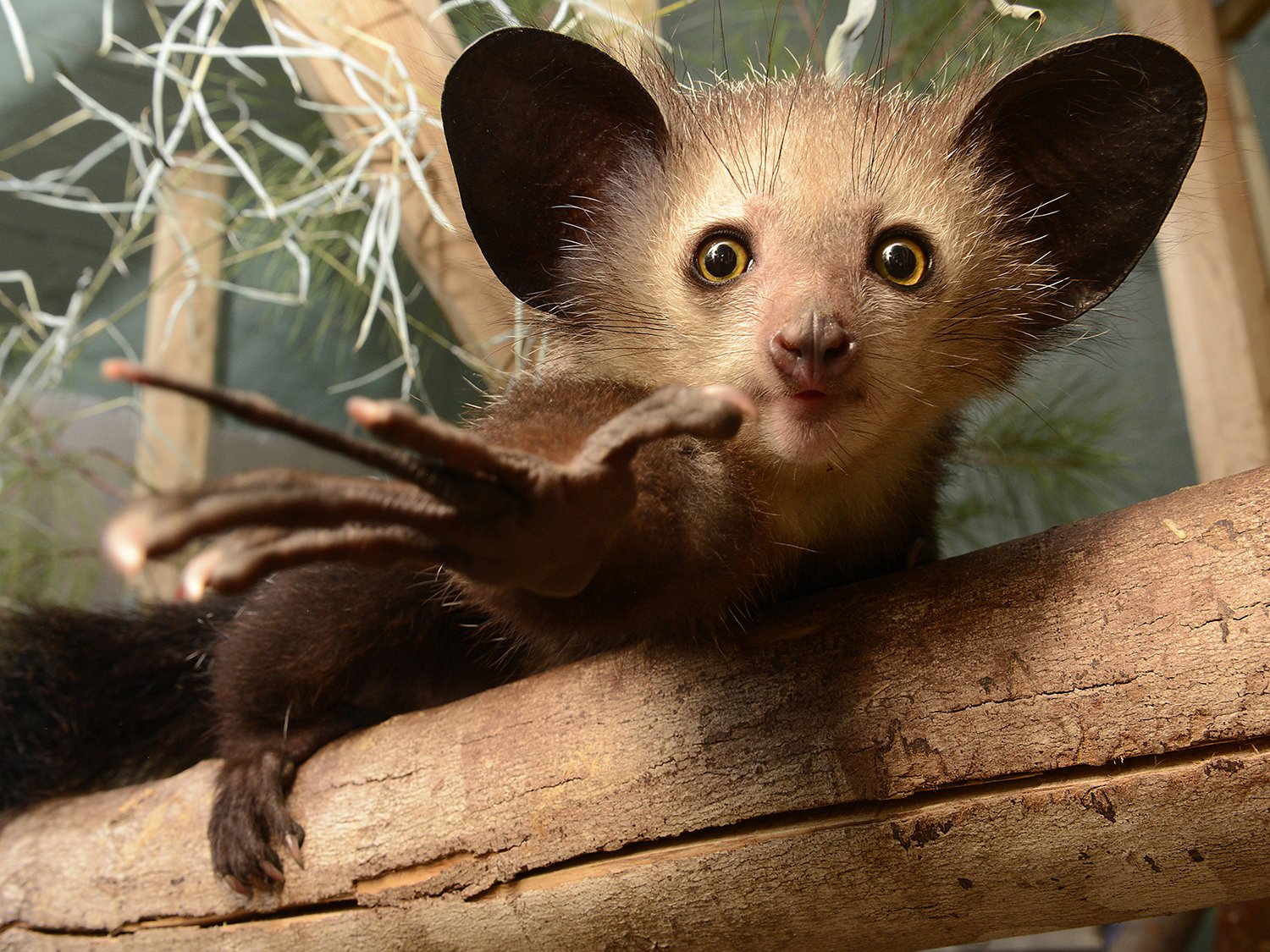
The Leakey Foundation Enigmatic Fossils Rewrite Story of When Lemurs Got to Madagascar
To dig deeper, the researchers created a 3D model using CT scans of the head and hand of the aye-aye to understand where the middle finger was going. The findings suggested the digit extended deep.

a close up of a small animal on a log
The aye-aye is the only extant member of the genus Daubentonia and family Daubentoniidae. It is currently classified as Endangered by the IUCN. A second species, Daubentonia robusta, appears to have become extinct at some point within the last 1000 years, and is known from subfossil finds. [10] Etymology

The AyeAye is an endangered lemur, being killed on sight due to superstition. The AyeAye is
Daubentonia madagascariensis Geographic Distribution and Habitat The elusive and sorely misunderstood aye-aye, the oldest type of living lemur, is endemic to Madagascar, the fourth largest island in the world.
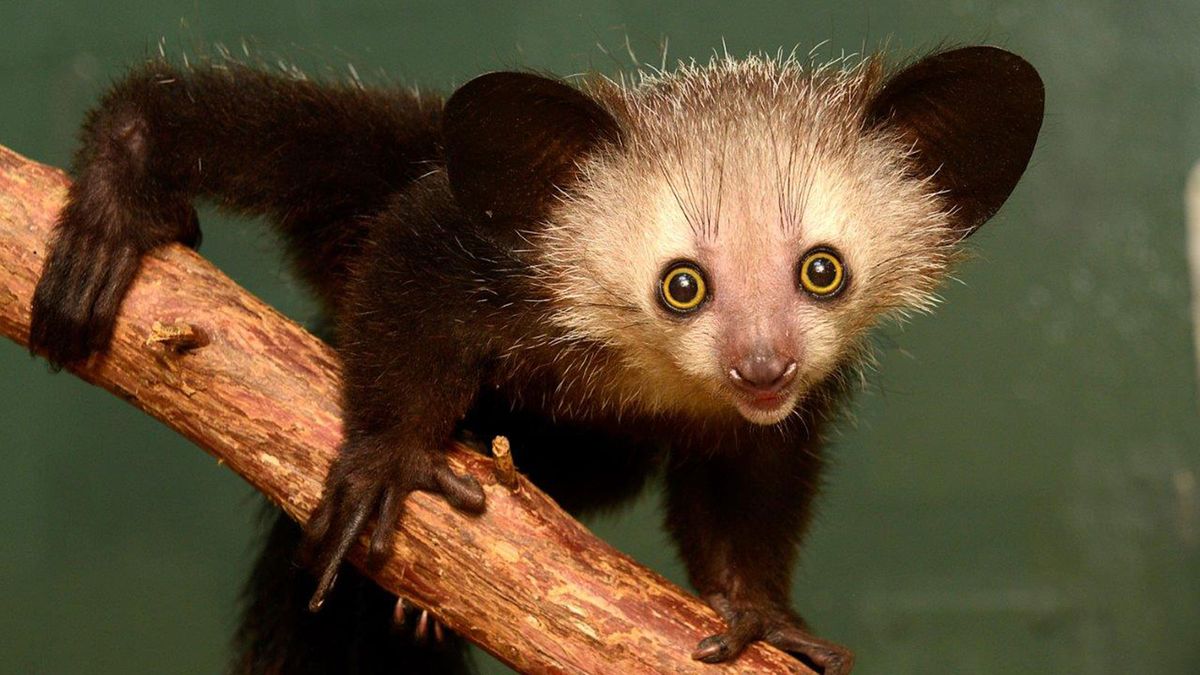
10 Wild Facts About the AyeAye, a Most Improbable Animal HowStuffWorks
Photo Ark Aye-Aye Common Name: Aye-ayes Scientific Name: Daubentonia madagascariensis Type: Mammals Diet: Omnivore Average Life Span In The Wild: 20 years Size: Head and body: 14 to 17 inches;.

Featured Creature AyeAye Blog Nature PBS
Daubentonia madagascariensis Read our Complete Guide to Classification of Animals. Aye-aye Conservation Status Endangered Aye-aye Locations Africa Aye-aye Facts Prey Seeds, Insects, Larvae, Fruit Name Of Young Infant Group Behavior Solitary/Group

Ayeaye, Daubentonia madagascariensis, Madagascar Stock Photo Dissolve
The aye-aye is a type of tree-carving lemur that's nominally impossible to understand—a platypus of the trees. Its hand makes up 41 percent of its forelimb; for a human, that would be like.

AyeAye The Biggest Animals Kingdom
Das Fingertier oder Aye-Aye ( Daubentonia madagascariensis) ist eine Primatenart aus der Gruppe der Lemuren. Es ist ein auf Madagaskar lebender, nachtaktiver Allesfresser, der durch das unter Primaten einzigartige Gebiss und die namensgebenden modifizierten Finger charakterisiert ist.